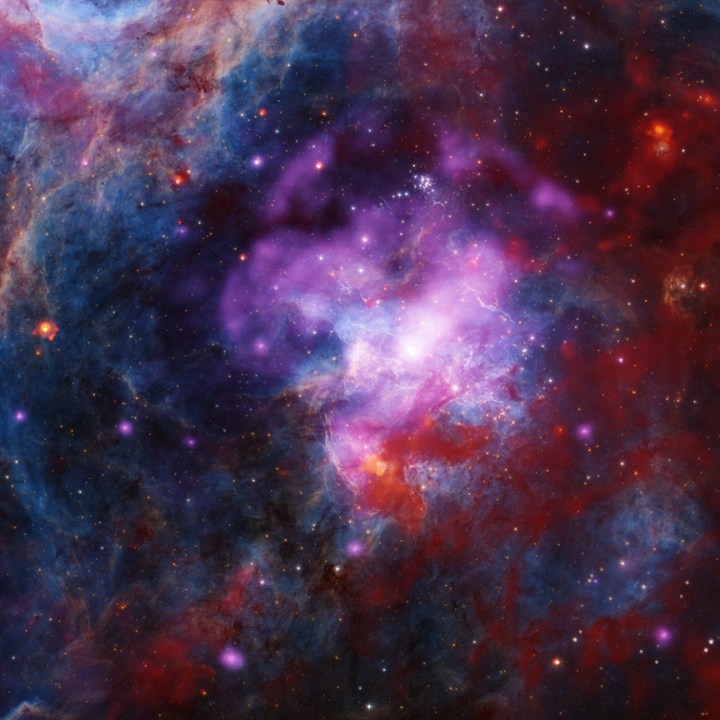A stunning new image of a supernova remnant combines data from four different telescopes to show a colorful, detailed picture of a busy region of space. The remnant 30 Doradus B (or 30 Dor B) was created when a massive star came to the end of its life and exploded, and while the explosion was only brief, it sculpted the dust and gas around the star in a way that remains visible even now, thousands of years later.

The image combines X-ray, infrared, and visible light observations from various telescopes to show the many features of the region, as NASA explains: “The new image of 30 Dor B was made by combining X-ray data from NASA’s Chandra X-ray Observatory (purple), optical data from the Blanco 4-meter telescope in Chile (orange and cyan), and infrared data from NASA’s Spitzer Space Telescope (red). Optical data from NASA’s Hubble Space Telescope was also added in black and white to highlight sharp features in the image.”
This region, located 160,000 light-years away in the Large Magellanic Cloud, a satellite galaxy of the Milky Way, has recently been studied using the X-ray data from Chandra in particular.
The findings suggest that this particular remnant is too complex to be the result of just one supernova explosion. The theory is that it is in fact the result of at least two supernovae, which happened at different time periods. The central knot of X-rays is the result of a supernova around 5,000 years ago, while an outer shell of X-rays is from an older supernova. This is suggested by the size of the outer shell, which is 130 light-years across, which seems to be too big to have formed from the same event as the inner structure.
The research is published in The Astronomical Journal.
Editors’ Recommendations
Services Marketplace – Listings, Bookings & Reviews